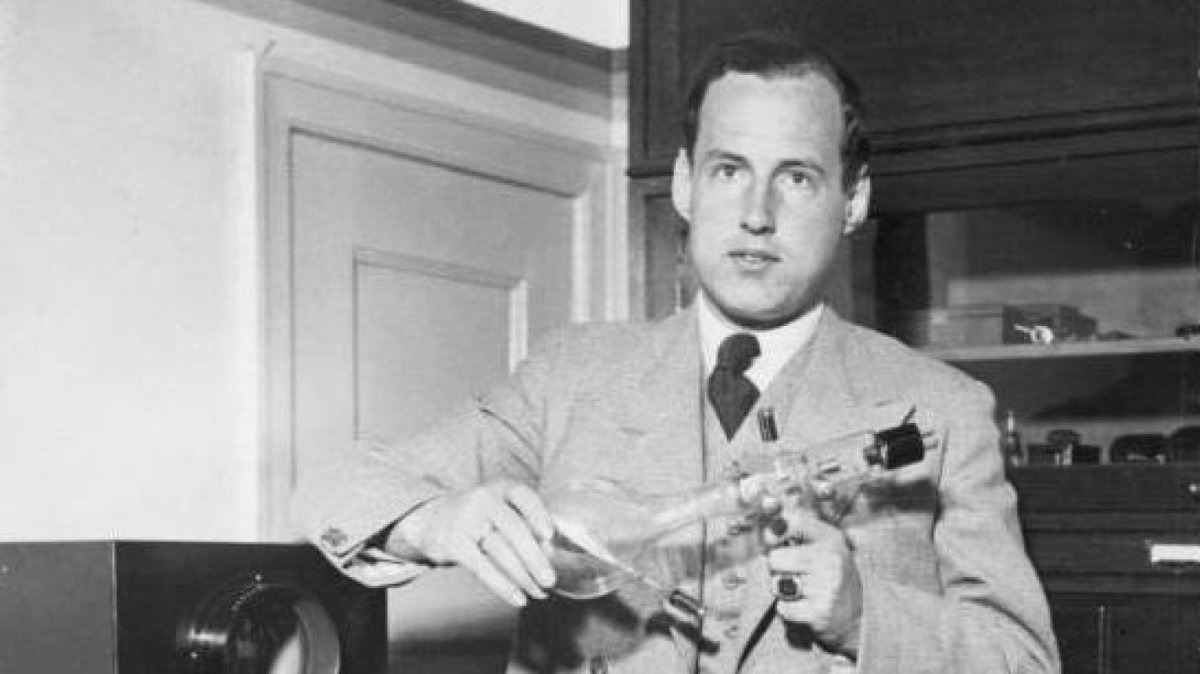90 years ago: Germany's first electronic image transmission
Source: Heise.de added 14th Dec 2020Regardless of whether film or television – it was a long process until the images learned to run in a viewable quality. Video transmission without mechanical components was an important milestone on the way to today’s flicker box. Manfred von Ardenne (1907 – 1997) succeeded in doing this in his research laboratory for electron physics in Berlin-Lichterfelde exactly 90 years ago.
But that wasn’t real television: The researcher had the brightness values of a slide recorded by a light point scanner (“flying spot scanner”) and displayed via wire on a connected cathode ray tube. Moving images were therefore not yet possible with the technology demonstration at that time. A transmitter to transmit the images wirelessly to viewers was also missing.
Nevertheless, the progress made by von Ardenne was so significant that the following year he set up his experiment on the radio exhibition stand of the then still in Berlin-based company Loewe presented. By then, one already had the theoretical tools to disassemble and transfer images – but the practice was literally unsightly, complicated and / or bulky.
Already in the year 1877 the Frenchman Constantin Senlecq had the idea of scanning and transmitting scenes or still images with a grid wall of photocells, i.e. with electronic components that have their electrical properties dependent on change the brightness. This idea lives on in a contemporary form in the sensors of film and photo cameras. Senlecq also had the flat screen: It consisted of an incandescent lamp field – this, too, a primitive preliminary stage of modern TV panels.
The problem was the signal transport: Senlecq wired each photocell in parallel with the corresponding light bulb, what with its modest grid of 90 times 50 “Pixels” 2. 500 Means lines. That was already tedious in the laboratory, these images could not have been sent as a television signal. In addition, both the photocells and the incandescent lamps proved to be too sluggish – the technology did not create more than shadowy images.
Braun tube and Nipkow disk With the Braun tube there was already 1897 a significantly better and faster screen available – until the triumph of flat displays it changed nothing in its principle. What was missing was a practical recording option, i.e. a video camera.
Senlecq’s photocells were not the solution – the German Paul Nipkow and the British John Logy Baird relied on rotating perforated disks. They scan the scene or still image at points, direct the light onto a photocell, which then emits an alternating voltage that corresponds to the changing brightness of the subject. One line is sufficient to transport the image signal – and if necessary it can easily be transmitted by radio, which makes television complete. For the first attempts, a light source, a second perforated disc synchronized with the recording side and a screen or focusing screen were used to display the images. But a Braun tube can just as well display the picture – Ardenne used it very quickly.
How a Nipkow disk works
(Image: www.movie-college.de)
On the recording side, you couldn’t get away from the perforated disk for the time being – although the technicians knew at the time that that only the quality of the analog SD TV with its around 500. 000 pixels would not be realized with this.
brands: Braun Loewe
media: Heise.de
keywords: TV
Related posts
Notice: Undefined variable: all_related in /var/www/vhosts/rondea.com/httpdocs/wp-content/themes/rondea-2-0/single-article.php on line 88
Notice: Undefined variable: all_related in /var/www/vhosts/rondea.com/httpdocs/wp-content/themes/rondea-2-0/single-article.php on line 88
Related Products
Notice: Undefined variable: all_related in /var/www/vhosts/rondea.com/httpdocs/wp-content/themes/rondea-2-0/single-article.php on line 91
Warning: Invalid argument supplied for foreach() in /var/www/vhosts/rondea.com/httpdocs/wp-content/themes/rondea-2-0/single-article.php on line 91
